Vietnam and the US established diplomatic ties in 1995 and a comprehensive partnership in 2013. For 25 years, the two nations have strengthened and expanded their cooperation in politics, diplomacy, economics, investment, defense and security, culture, education, science-technology, mitigation of consequences of war and people-to-people exchanges.
Bilateral trade has increased 120-fold, from 450 million US dollars in 1995 to over 60 billion US dollars in 2018. The US is a big export market for Vietnam while Vietnam is among those importing to the US reporting a high growth.
At their talks, Party General Secretary and President Nguyen Phu Trong and US President Donald Trump agreed to expand the markets and look for new export products.
Regarding defense and security, based on the reached agreements, the two countries have gradually expanded cooperation and achieved important progress, particularly in search and rescue, humanitarian relief, natural disaster mitigation, peacekeeping, training and maritime security.
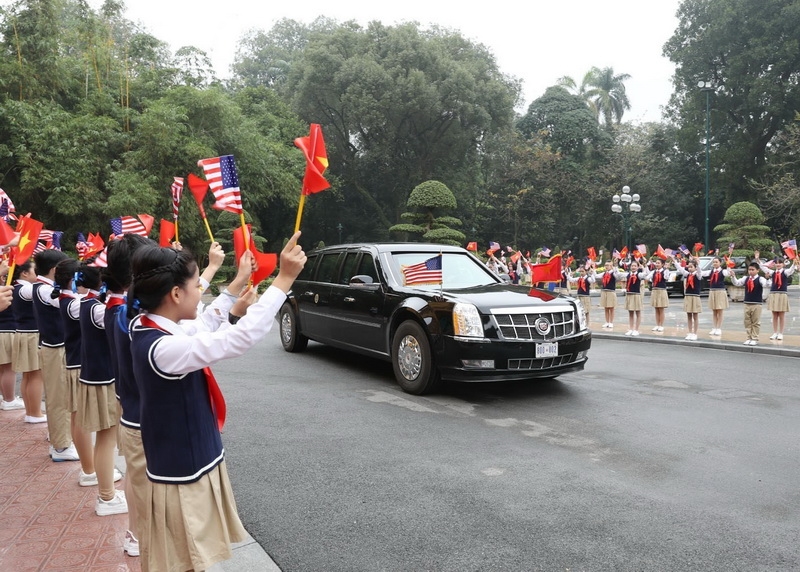
Vietnamese children welcome US President Donald Trump at the Presidential Palace. Photo: Tri Dung/VNA
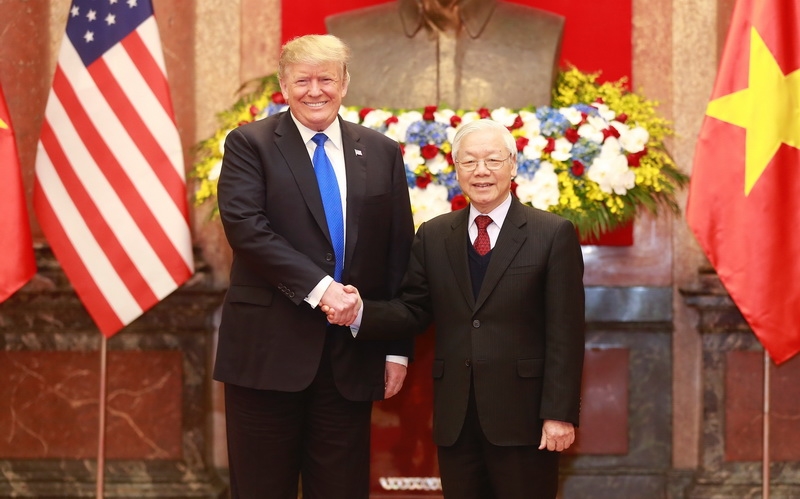
Party General Secretary and President Nguyen Phu Trong receives US President Donald Trump. Photo: Tri Dung/VNA
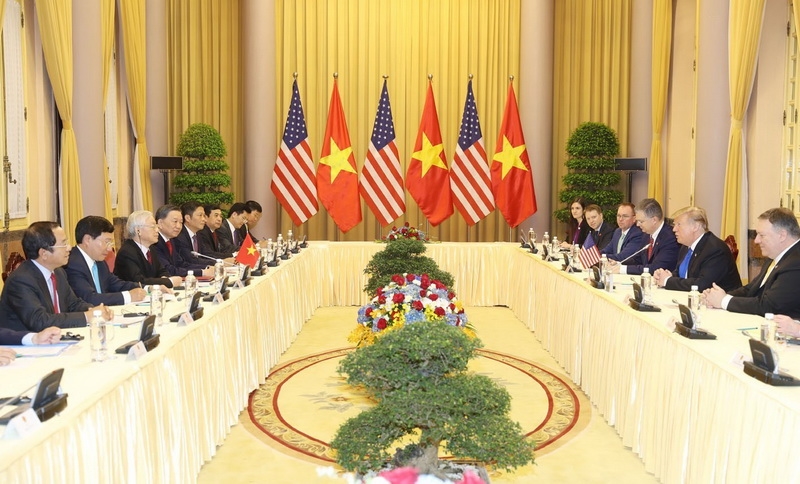
Party General Secretary and President Nguyen Phu Trong holds talks with US President Donald Trump. Photo: Tri Dung/VNA
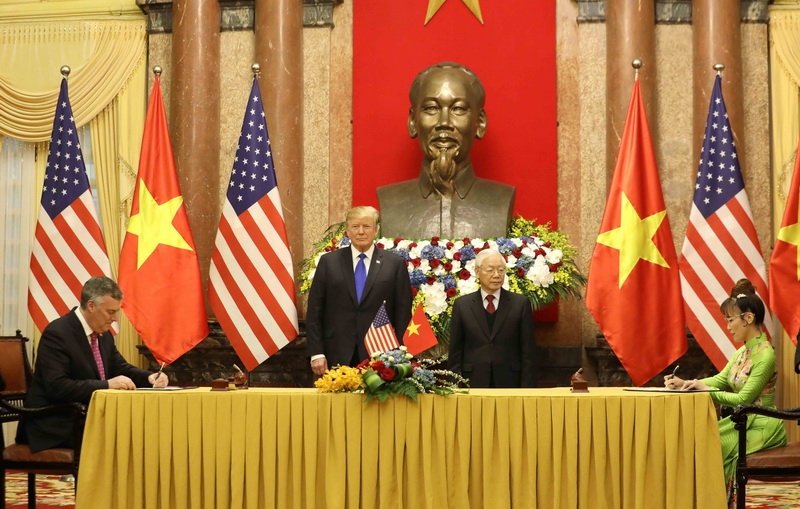
The two leaders witness the signing of a trade deal between Vietjet Air and Boeing
for 100 new 737 MAX planes worth 12.7 billion US dollars. Photo: Phuong Hoa/VNA

They witness the signing of a deal between Bamboo Airways and Boeing
to purchase 10 Boeing 787-9 Dreamliner planes worth nearly 3 billion US dollars. Photo: Tri Dung/VNA
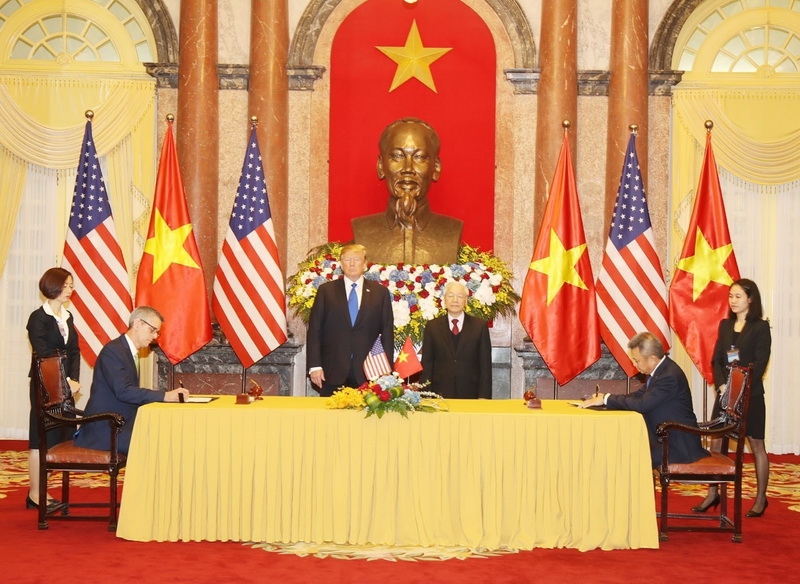
The two leaders also witness the signing of a Memorandum of Understanding between Vietnam Airlines
and US Sabre Corporation on the latter’s provision of technology and aviation management software application services.
Photo: Tri Dung/VNA
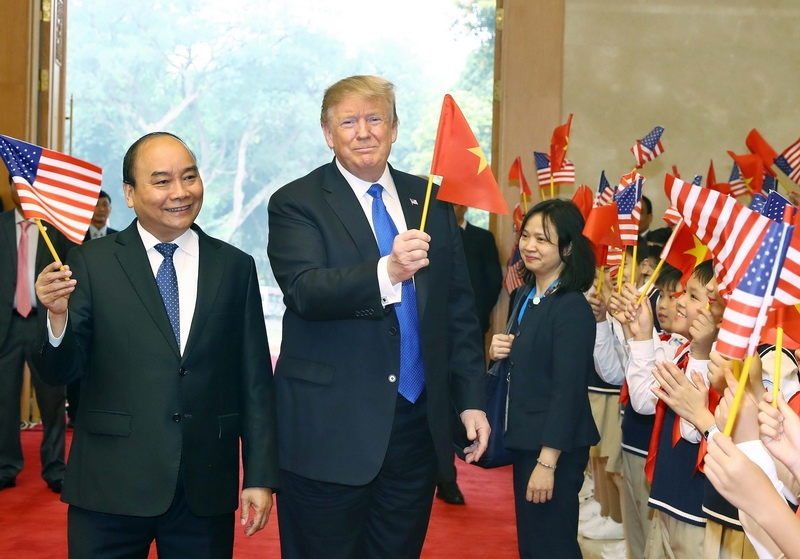
Prime Minister Nguyen Xuan Phuc receives US President Donald Trump in Hanoi. Photo: Thong Nhat/VNA
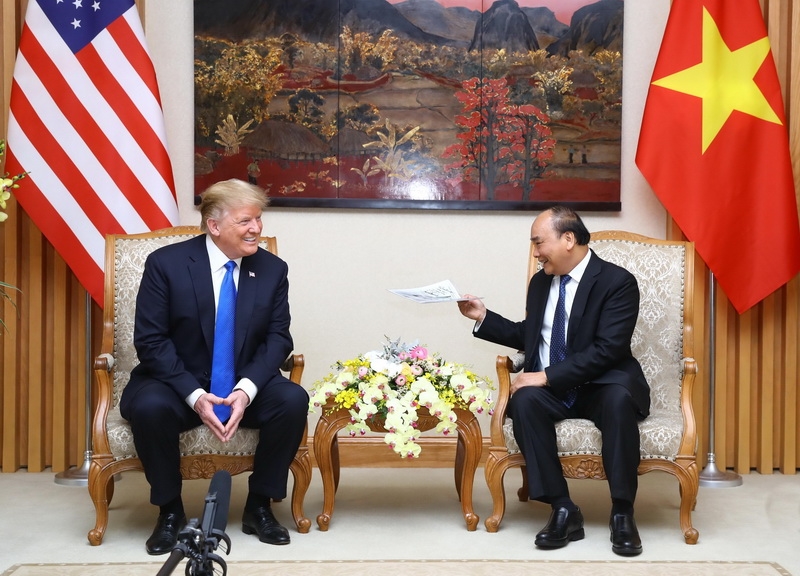
Prime Minister Nguyen Xuan Phuc has a meeting with US President Donald Trump. Photo: Thong Nhat/VNA
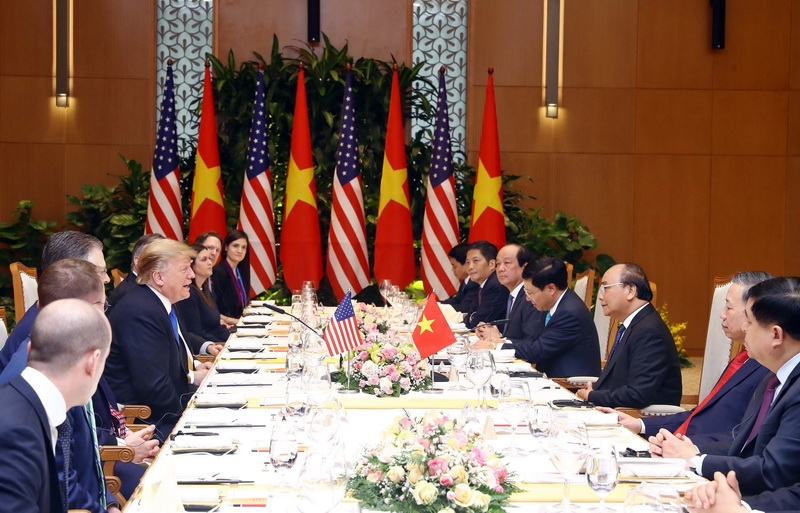
Prime Minister Nguyen Xuan Phuc has a working lunch with the US President. Photo: Thong Nhat/VNA
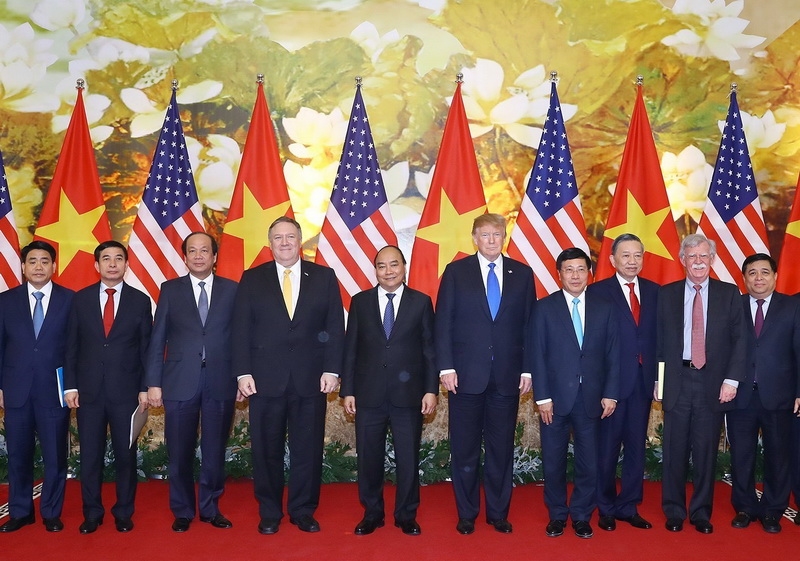
Prime Minister Nguyen Xuan Phuc, US President Donald Trump
and representatives of two delegations pose for a photo: Photo: Thong Nhat/VNA |
|
Signed cooperation documents:
A trade deal between Vietnamese carrier Vietjet Air and Boeing for 100 new 737 MAX planes worth 12.7 billion US dollars.
A 12-year agreement worth 5.3 billion US dollars between Vietjet Air and General Electric (GE) Aviation for aircraft engines and comprehensive maintenance service.
A deal between Bamboo Airways and Boeing to purchase 10 Boeing 787-9 Dreamliner planes worth nearly 3 billion US dollars.
A Memorandum of Understanding between Vietnam Airlines and US Sabre Corporation on the latter’s provision of technology and aviation management software application services. |